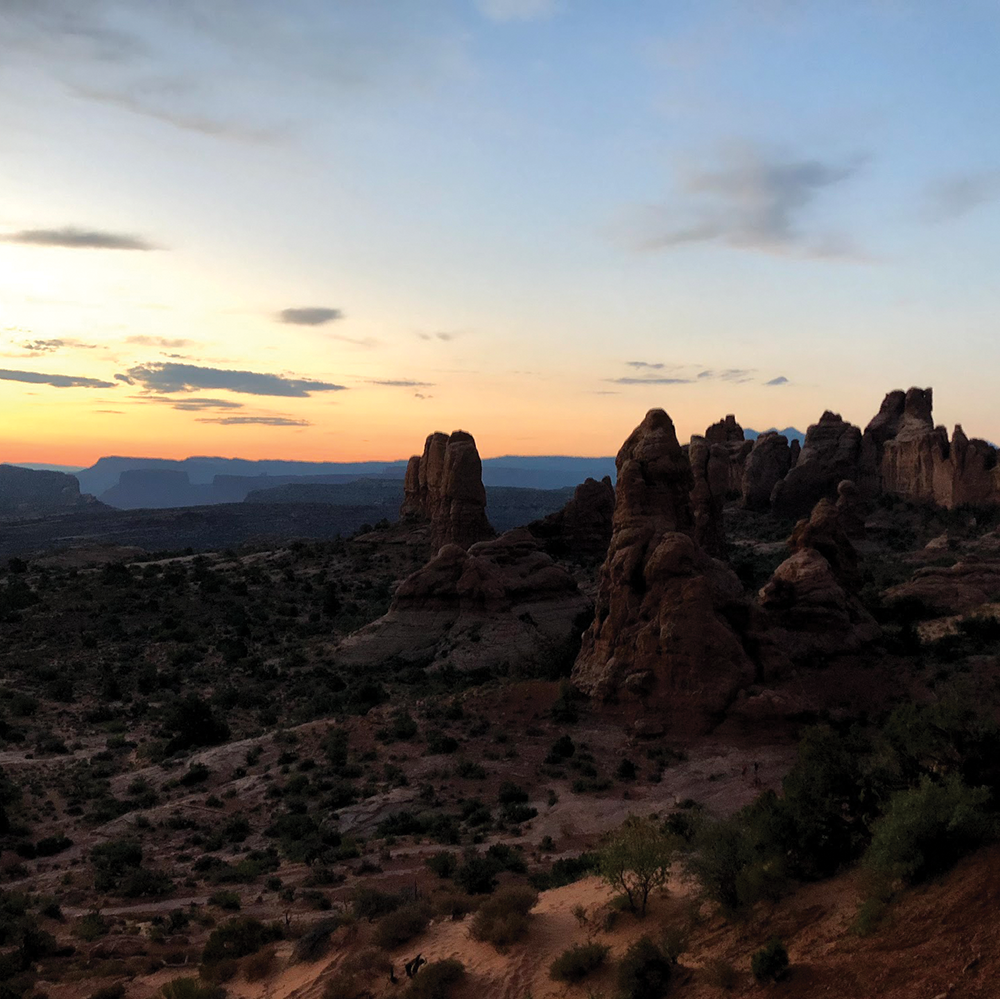U.S. National Parks conservation efforts must negotiate the tension between expanding visitation as well as environmental and cultural preservation, panelists said at an event Nov. 13.
The event, titled “Social Justice in the World of Conservation,” was sponsored by Georgetown University Outdoor Education and the Georgetown Renewable Energy and Environmental Network in the Walsh Building on Wednesday. Panelists examined both the importance and obstacles surrounding the improvement of national parks in the event, which was moderated by Randall Amster, co-director of the Georgetown College Environmental Studies Program.
Discussions around the history of national parks have always sparked debate about beliefs about land ownership and control, according to panelist James Olsen, a Georgetown philosophy and environmental ethics professor.

“When we talk about these sites of land, when we talk about the history, the histories are complex,” Olsen said at the panel. “They are battlegrounds and they have been battlegrounds, but they are are not just battles over, sort of, the land itself and who controls it, but these are battles of ideas and these are battles of values.”
Other panelists at the event included Bette Jacobs, a Georgetown health systems administration professor and a member of the Cherokee Nation, and Ani Kame’enui, the deputy vice president of government affairs at the National Parks Conservation Association, an advocacy organization that seeks to protect and enhance America’s national park system.
In recent years, the National Park System has increased park visits amid government funding cutbacks. Between 2011 and 2017, visitation at National Parks increased by 19%, but the parks also faced an 11% reduction in staff, according to the NPCA. In 2018, the National Park Service logged 318,211,833 visits.
Although increased funding for National Park services might encourage more travelers to visit, more visitors engaging with the parks carries potentially negative consequences for the park’s flora and fauna, according to Olsen.
“If we increase the resources that are going to the national park service and we hired more instead of cutting jobs and all of this, the more you visit, of course, the higher the ecological impact,” Olsen said.
Marginalized groups are often underrepresented in National Park visitation. In 2016, black people made up about 7% of national park visitors despite constituting 13% of the nation’s population, according to National Geographic. The Latinx and Native American communities were also underrepresented.
When considering the future of national parks, it is important to consider the financial difficulty many communities face in accessing the locations, according to Kame’enui.
“I think one of the challenges we face in considering the recipe of conserving and engaging with nature is one of access,” Kame’enui said. “The park system, by and large, is designed for rich white people, so if we want to talk about conserving and preserving these spaces, it is going to mean limiting access and limiting populations, which goes against the grain of a movement toward a more inclusive park system.”
To encourage visitation and to celebrate the National Park Service’s 100th anniversary in 2016, the organization launched a “Find Your Park” initiative, in which prospective visitors can take an online quiz to determine which parks would best suit their preferences and interests.
However, some parks pushed back against the initiative, arguing an uptick in visitation can put a heavy strain on the parks’ operations and natural ecology, according to Kame’enui.
“By the end of 2016, parks like Rocky Mountain were saying, ‘find a different park,’” Kame’enui said. “How do you balance an increasing interest in visiting our national parks with the fact that we institutionally are not adequately funding them?”
In 1872, when the American government sought to create the first national park, Yellowstone National Park, new settlers displaced several Native American tribal nations, according to TIME. Since this first park’s creation, the government has overseen the displacement of several other Native American tribes to develop national parks, such as Yosemite National Park.
Native American groups have engaged in discussion with the federal government to discuss their present-day relationship with the national parks and the preservation of culturally significant sites within the locations, according to Jacobs.
“It is a very complex intertwined story as to how we have come to be here. There are definitely places that are sacred that we view with reverence in awe,” Jacobs said. “But there are smaller, quieter places that evoke and are sacred for a lot of different reasons — those are all places of identity.”




















